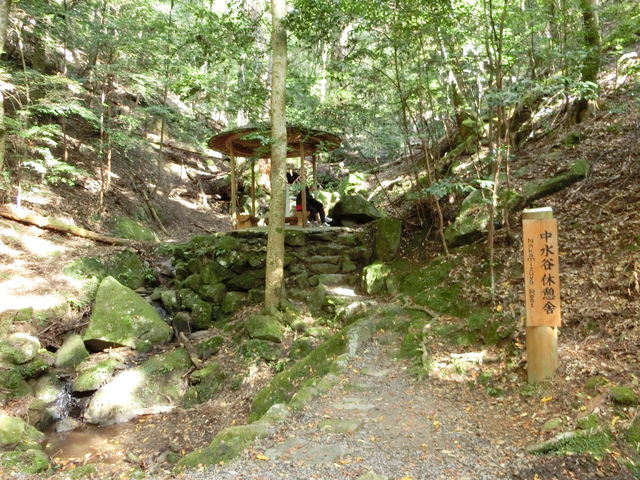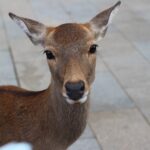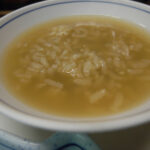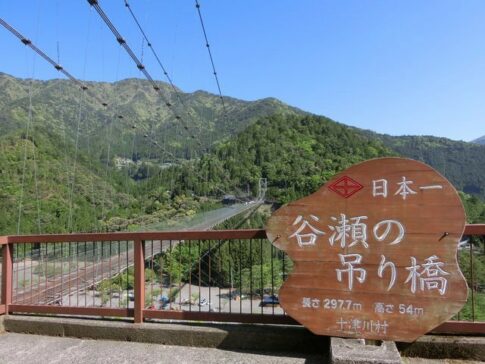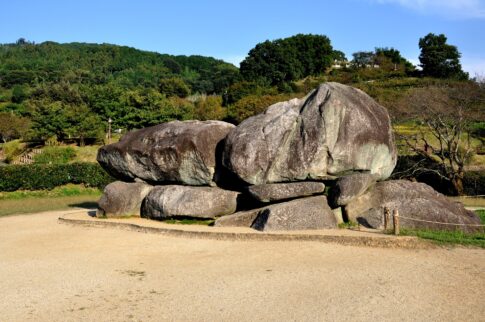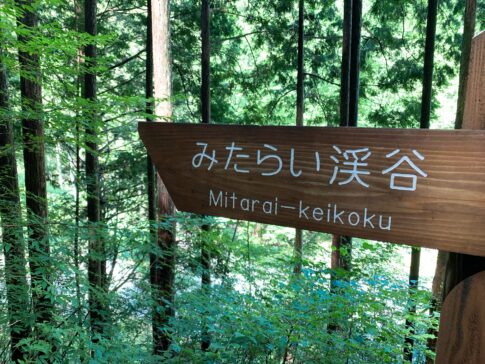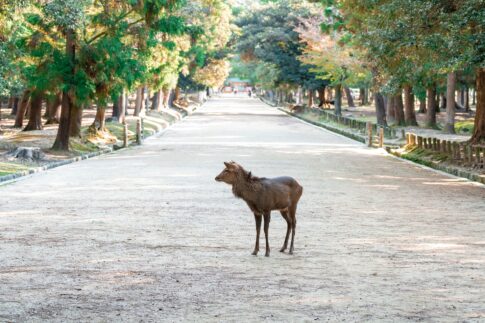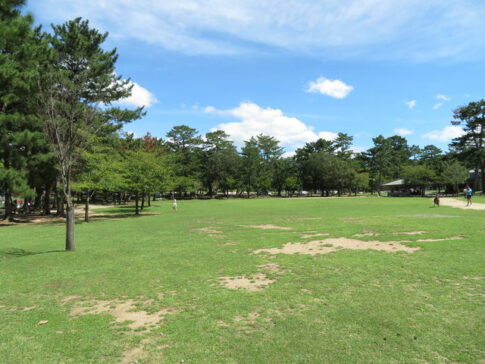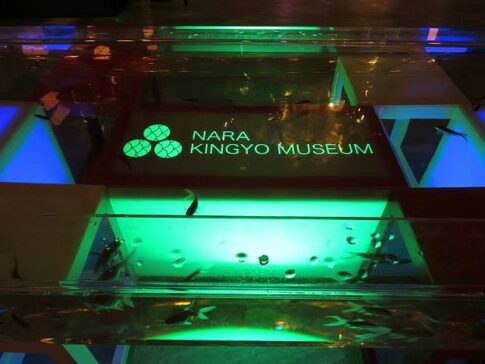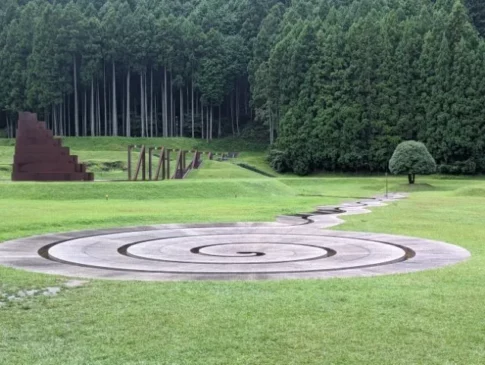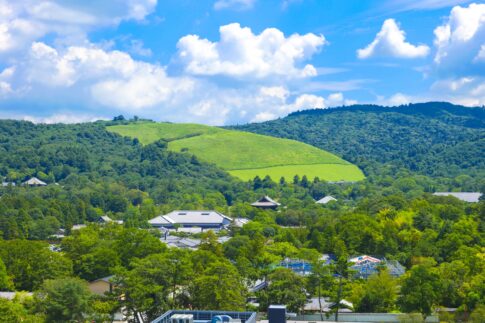What you need to know before visiting Kasugayama Primeval Forest
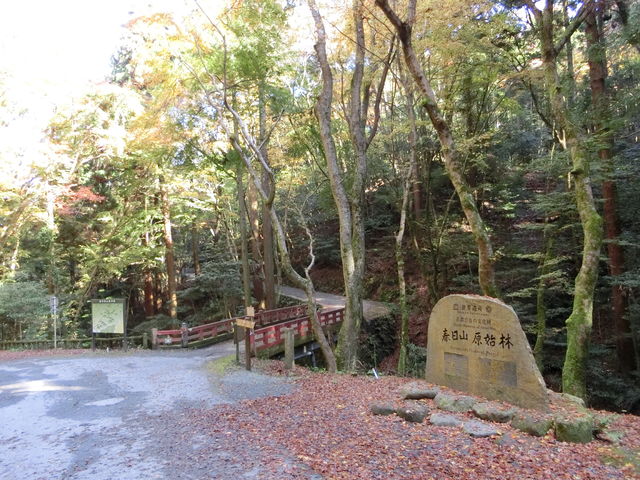
1. About the Kasugayama Primeval Forest
The Kasugayama Primeval Forest, located at an elevation of 498 meters above sea level, is a beautiful ridge line in the eastern mountain range of Nara City and covers an area of approximately 250 hectares.
Since it has been a place of worship since ancient times as the sacred mountain of Kasuga Taisha Shrine, the forest has been actively protected and maintained in its pristine state, with few axes being cut and a ban on logging issued around the 9th century.
The forests are dominated by evergreen broad-leaved trees (oaks and shiyi), which are representative of warm-temperate forests, with many species of warm-temperate vines (Fuji and Kagikazura) and ferns (Japanese knotweed), and a diverse plant community consisting of over 800 species of trees from both temperate and cold zones.
It is also home to an abundance of insects and birds.
It also plays an important role in the preservation of Nara’s landscape.
- As a “Chinju-no-mori” Forest
A rare “Chinju-no-mori” forest that still retains its pristine form despite its proximity to the city. The Kasugayama Primeval Forest has been protected for more than 1,000 years as the sacred area of Kasuga Taisha Shrine, since the Emperor Nimei ordered hunting and logging to be prohibited in the Heian period (794-1185).
It was designated as a special natural monument in 1955 because it is extremely rare to find a forest that still retains its pristine form in the vicinity of an open city.
In 1998, the forest was registered as one of the World Cultural Heritage Sites of the “Ancient Capital of Nara” by UNESCO in recognition of its cultural landscape combined with the Kasuga Taisha Shrine.
The “Chinju-no-mori” has long been an essential part of Nara, and is mentioned in many old Japanese poems, including the Manyoshu (The Anthology of Myriad Leaves).
- As an Untouched Primeval Forest
The Kasugayama Primeval Forest has not been completely untouched since the Heian Period (794-1185) when logging was banned.
Kasuga, which was named after the flowers (shikimi) collected by Todaiji and Kofukuji temples.
When typhoon damage caused by fallen trees resulted in damage to the area, native species were replanted by human hands.
- Beliefs, History, and Culture
The Kasuga Grand Shrine is scattered throughout the Kasuga Mountain primeval forest and is still the object of religious worship.
During the Heian and Kamakura periods, the area was valued as a place for monks in Nara to practice asceticism, and historical sites such as the Kasugayama Grotto Buddha have been preserved.
Other historical and cultural sites include a large cedar tree planted by Toyotomi Hideyoshi and the Takizaka Road (the old Yagyu Highway), which was opened by the Nara Magistrate during the Edo period (1603-1868).
- Nature
The Kasugayama Primeval Forest is a very rare forest where valuable evergreen broad-leaved forests, mainly evergreen broad-leaved trees such as shii and kashi, which produce acorns, remain adjacent to the city.
In addition to shii and oak, there are coniferous trees such as cedar, fir, and tsuga, which are highly valued as “Kasuga cedar,” deciduous broadleaf trees such as Japanese maple and dogwood, whose leaves turn beautiful red in autumn, and a wide variety of vegetation including rare species such as cranes, ferns, and mosses.
It is also a valuable habitat for a variety of wild birds, mammals such as deer and flying squirrels, frogs, insects, and other creatures.
- Location and Area
Located east of the center of Nara, Kasugayama forms a ridgeline.
Wakakusa to the north, Koenzan to the south, and Mikagayama, the sacred mountain of Kasuga Taisha Shrine, to the west (in the foreground from the town of Nara). Its elevation is 496 meters.
The area designated as a special natural monument is estimated to be 298 hectares.
2. About the Kasugayama Trail
The Kasugayama Trail is a great place to enjoy forest bathing, bird watching, and strolling among giant trees in the tranquility of the mountain.
During the fall foliage season, the vivid colors of the leaves reflect the changing of the seasons.
The Takizaka Path (part of the old Yagyu Highway and Tokai Nature Trail), a stone-paved path along the valley, is the old Yagyu Highway that leads to Yagyu, the home of the swordsmiths. Along the way, there are stone Buddhas such as the Reclining Buddha, Sunset Kannon, Morning Sun Kannon, and Kasugayama Grotto Buddha (Anabutsu).
The murmuring of the Noto River and the chirping of wild birds can be felt.
3. About Kasuga Okuyama Road
The Kasuga Okuyama Road, which is located near the city center but runs through a dense forest grove, is one of Nara’s most popular tourist attractions, providing an easy way to explore nature through a private driveway.
Encountering giant trees that are more than 1,000 years old from a car window, visitors can experience the greatness of nature and understand the connection between the benefits of forests and human society.
To protect the primeval forest, vehicular access is limited to certain parts of the area, and entry into the forest and the use of fire are prohibited.
4. Difficulties in forest protection
Most of the Kasugayama Primeval Forest is an evergreen broad-leaved forest of shii and oak trees. Walking through the primeval forest, these trees provide moderate shade for the trails.
However, on the ground surface, the number of trees that will carry on the next generation (successor trees) is decreasing.
Walking along the Kasugayama Trail, one can see quite far from the forest slope. First-time walkers can even be heard commenting on how refreshing it is to have such a clear view.
However, if you look closely, you can see that there is almost no vegetation on the surface portion of the ground and the roots are exposed.
Comparing the photo taken about 30 years ago with the present one, we can see that about 2m from the ground surface is covered with bushes, making it impossible to see deep into the forest.
Normally, there should be more underbrush in the forest.
Lack of undergrowth can lead to sediment runoff, which can cause seeds buried in the soil to drift away, and can also lead to frequent tree falls.
When you visit there, you have to understand the situation and be careful not to do any harm to its nature.
Summary
Today we explained about Kasugayama Primeval Forest in Nara.
If you go there, not only enjoy it but also please learn about nature in Japan!
